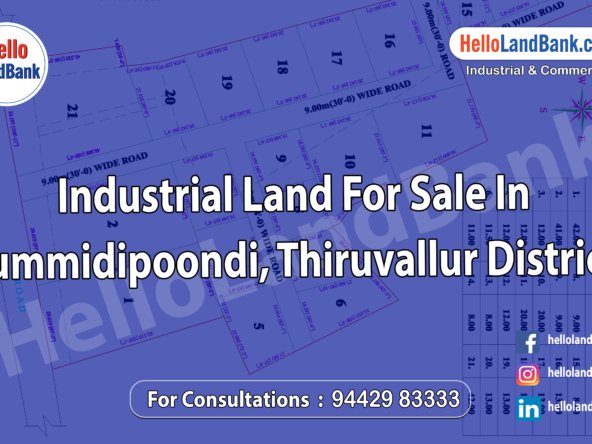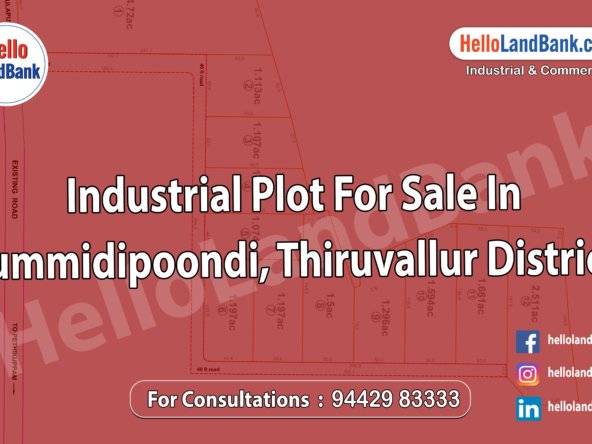Handling transportation and access on industrial land involves careful planning, infrastructure design, and traffic management strategies to facilitate efficient movement of goods, vehicles, and personnel within the industrial site while minimizing congestion, safety risks, and environmental impacts. Here are key considerations for managing transportation and access on industrial land:
1. Site Planning and Layout:
- Design the layout of industrial land to optimize transportation flow, vehicle circulation, and access routes within the site. Plan for clearly defined roadways, truck access points, loading docks, and parking areas to accommodate different types of vehicles, including trucks, trailers, forklifts, and delivery vehicles.
2. Road Infrastructure:
- Develop adequate road infrastructure, including access roads, internal roadways, intersections, and driveways, to provide safe and efficient vehicular access throughout the industrial site. Design roadways with appropriate widths, turning radii, sight distances, and road markings to accommodate large trucks, emergency vehicles, and heavy equipment movements.
3. Truck Routes and Loading Areas:
- Establish designated truck routes, circulation patterns, and loading areas to streamline truck movements, minimize conflicts, and optimize loading and unloading operations within the industrial site. Design loading docks, staging areas, and maneuvering spaces to accommodate truck traffic, cargo handling, and material storage activities.
4. Traffic Management:
- Implement traffic management measures, signage, and traffic control devices to regulate vehicular movements, enforce speed limits, and improve safety on industrial roads and intersections. Install traffic signs, signals, stop signs, speed bumps, and pedestrian crossings to manage traffic flow, prevent accidents, and ensure compliance with traffic regulations.
5. Pedestrian Access and Safety:
- Provide safe pedestrian access routes, sidewalks, crosswalks, and pedestrian pathways to accommodate pedestrian traffic and ensure pedestrian safety within the industrial site. Separate pedestrian and vehicle traffic where possible, install pedestrian crossings, and implement traffic calming measures to reduce conflicts and enhance safety for workers and visitors.
6. Vehicle Parking:
- Designate parking areas, parking lots, and parking spaces for employee vehicles, visitor parking, and truck parking to accommodate parking demand within the industrial site. Provide adequate parking signage, markings, lighting, and security measures to facilitate safe and organized parking and prevent congestion in parking areas.
7. Public Transportation Access:
- Coordinate with local transportation authorities to provide access to public transportation options, such as bus stops, transit stations, or shuttle services, for employees commuting to the industrial site. Enhance connectivity with public transit routes and promote alternative transportation modes to reduce single-occupancy vehicle trips and support sustainable commuting options.
8. Transportation Demand Management (TDM):
- Implement transportation demand management strategies, such as carpooling programs, ridesharing incentives, flexible work schedules, and telecommuting options, to reduce vehicular traffic, alleviate parking demand, and promote sustainable transportation behaviors among employees working on the industrial land.
9. Emergency Access and Evacuation Routes:
- Designate emergency access routes, fire lanes, and evacuation routes to facilitate emergency response, evacuation procedures, and access for emergency vehicles within the industrial site. Ensure clear signage, markings, and access points for emergency vehicles to respond quickly to incidents and ensure life safety.
10. Environmental Considerations:
- Minimize environmental impacts associated with transportation and access on industrial land by implementing pollution prevention measures, stormwater management practices, and green infrastructure solutions. Consider sustainable transportation alternatives, such as electric vehicle charging stations, bike racks, and pedestrian-friendly design elements, to promote environmental stewardship and reduce carbon emissions.
By addressing these considerations and implementing appropriate transportation and access management strategies, industrial landowners, developers, and operators can optimize transportation flow, enhance safety, and improve accessibility within the industrial site, supporting efficient operations and sustainable growth.




